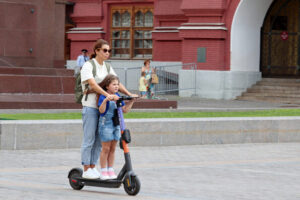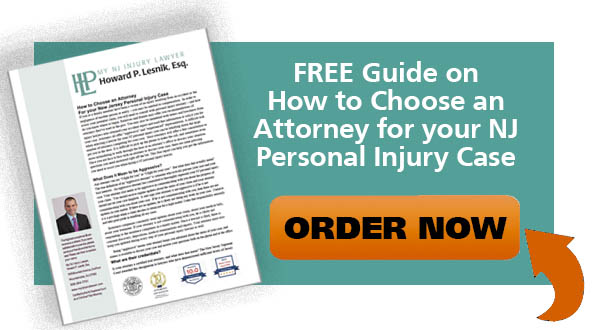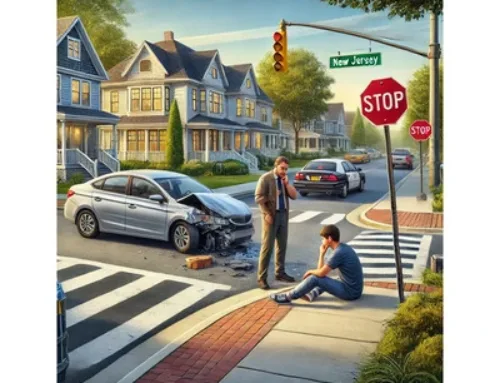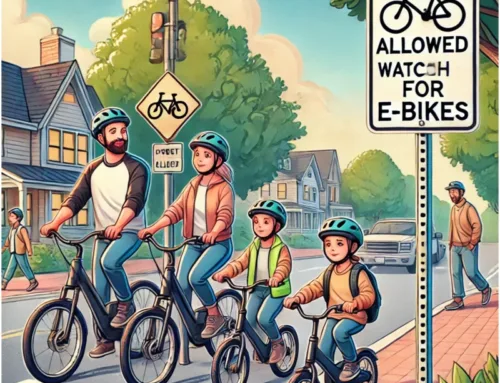Electric scooters and e-bicycles seem, at first glance, like excellent solutions to many of the problems we face in the modern world. Because e-scooters are battery-powered and rechargeable, they appear to be both an ecologically- and financially smart choice in a time of soaring gas prices and rising concerns about climate change. E-scooters are certainly less expensive than cars to purchase and maintain, for riders with short commutes. In addition, they’re fun to ride. But perhaps a bit more consideration and preparation are necessary before everyone should be encouraged to reach for an e-scooter to meet their short-distance transportation needs. The problem is that, despite all their advantages, e-scooters and similar devices are among the most dangerous vehicles currently on the road.
 For a recent, tragic example of how dangerous e-scooters can be, New Jersey residents need look no further than Union City, where last month the rider of an electric scooter was killed in a collision with a fuel truck on Route 495. While it’s true that a single example doesn’t prove a trend, recent scientific studies analyzing medical data have demonstrated that statistically, e-scooters are about as dangerous as motorcycles, in terms of the frequency of injuries requiring medical treatment. The first such study was conducted in California, using natural language processing (NLP) software to search through patient records from two hospitals and 180 clinics in the Los Angeles area to identify a total of 1,354 patients injured in accidents with e-scooters. Those injuries represented 115 injuries per 1 million e-scooter rides during the study period; by comparison, similar statistics are 104 injuries per million motorcycle rides, 15 per million for bicycles, 8 per million for cars, and 2 per million for pedestrians.
For a recent, tragic example of how dangerous e-scooters can be, New Jersey residents need look no further than Union City, where last month the rider of an electric scooter was killed in a collision with a fuel truck on Route 495. While it’s true that a single example doesn’t prove a trend, recent scientific studies analyzing medical data have demonstrated that statistically, e-scooters are about as dangerous as motorcycles, in terms of the frequency of injuries requiring medical treatment. The first such study was conducted in California, using natural language processing (NLP) software to search through patient records from two hospitals and 180 clinics in the Los Angeles area to identify a total of 1,354 patients injured in accidents with e-scooters. Those injuries represented 115 injuries per 1 million e-scooter rides during the study period; by comparison, similar statistics are 104 injuries per million motorcycle rides, 15 per million for bicycles, 8 per million for cars, and 2 per million for pedestrians.
What is it about e-scooters that makes them so dangerous to ride? As it turns out, there are actually quite a few factors.
- Helmets, or the lack thereof. Many states and municipalities don’t require helmets for e-scooter riders, or only mandate helmets for riders under 18. Unfortunately, the 2022 UCLA study (mentioned above) revealed that some 40 percent of injuries involved head trauma. A 2023 German study revealed very similar findings, with only 5 percent of riders wearing helmets.
- No licensing requirements. Another lack of regulatory measures that makes e-scooters more dangerous is the absence of any training or licensing needed to operate a scooter. There’s no guarantee that users know how to ride the scooter proficiently or understand the rules of the road.
- Recklessness and intoxication. Much like drunk driving, drunk e-scooter riding tends to result in accidents. Surprisingly, the German study found this problem much less prevalent in the US than Europe and New Zealand, where alcohol was involved in roughly 1 in 3 e-scooter injury reports. Many of these involved injury to the rider’s face from a fall.
- E-scooters tend to be top-heavy and easy to tip over, especially at faster speeds. The speed limit in California for e-scooters during the UCLA study was 15 mph; in Germany it was 20 kph (approximately 12.4 mph). In New Jersey, current law defines low-powered scooters as capable of a top speed of 19 mph.
- Mechanical or design inadequacies. Most e-scooters rides involve e-scooter rental services, rather than privately owned scooters, and these services tend to choose inexpensive models are less durable, and unfamiliar riders may not notice damage. These cheaper e-scooters usually also have lower weight limits and often lack sufficient lights for night riding. Some models are known to have issues with their braking software or have batteries that can catch fire if improperly charged.
- Potholes and small wheels. Poor roads can give any motorist an unpleasant jolt when passing over a pothole. However, most vehicles with large, air-filled tires can absorb that bump fairly safely. E-scooters have small, solid wheels that provide minimal shock absorption on poorly-maintained roads.
- Sharing the road. As motorized vehicles, e-scooters are not allowed on sidewalks, which are dangerous places for them anyway, according to a 2020 study by the Insurance Institute for Highway Safety. However, riding in the road puts e-scooter riders in closer proximity with cars and trucks, also a hazard.
The kinds of injuries sustained by the rider of an e-scooter in an accident depend, in part, on the type of accident. Most e-scooter accidents can be sorted into two general categories: falls and collisions. Collisions with motor vehicles typically result in the most severe, even deadly, injuries – though injuries from falls can still be quite dangerous. Falling from an e-scooter often results in head trauma, TBI, or face injury. Other common injuries are bone fractures and sprains to the arms or legs, as the rider tries to break their fall with their limbs. Lacerations and “road rash” from scraping skin along the pavement are also fairly common injuries among riders falling from e-scooters.
Contact MyNJInjuryLawyer Howard P. Lesnik
If you or a loved one suffered an injury in an accident in NJ, you should contact an attorney familiar with handling these claims. An experienced NJ Injury Lawyer will know how to obtain medical records, videos, photographs, experts, locate witnesses and contact the insurance company so you can make a claim for your injuries.
My NJ Injury Lawyer Howard P. Lesnik, Esq. offers complimentary strategy sessions to address any issue or questions you may have for your injury claim in NJ.
Please contact NJ Injury Lawyer Howard Lesnik, Esq., immediately if you were involved in an accident. I personally handle NJ personal injury cases on a regular basis. Please contact me now by email, by phoning 908.264.7701, or by completing the form to the right to schedule your complimentary 30-minute strategy session.







